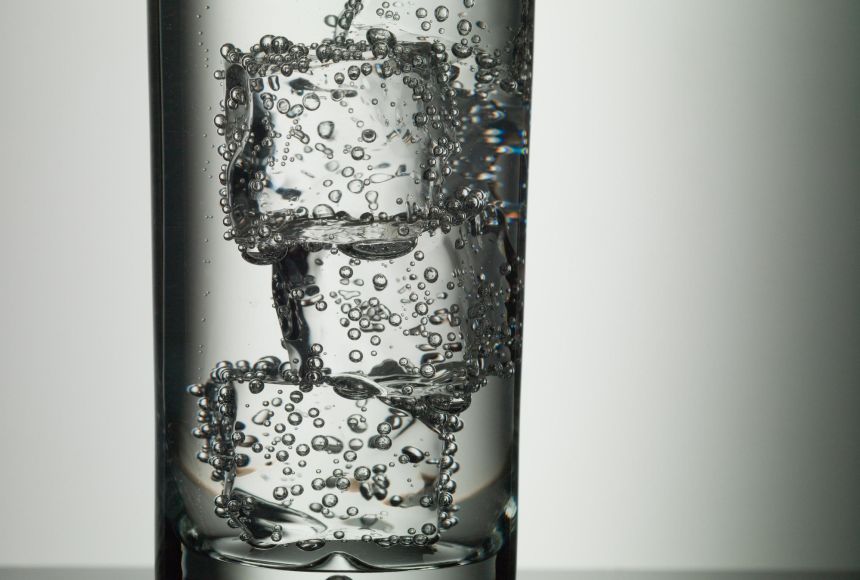Atoms are similar to building blocks. They are the tiny pieces that make up all matter. Atoms can join together with other atoms. When they do, they form molecules.
The atoms that were in a dinosaur millions of years ago may be inside you today. Same goes for atoms from a star billions of years before that.
Matter makes up everything we see. It is never created or destroyed. It cycles through our world.
What Is Matter?
Matter is anything that has mass and takes up space. It includes molecules, atoms, and other fundamental particles. It also includes any substance containing these particles.
Matter can change form. Still, through it all, matter is conserved. That is, the same amount of matter exists after the change as existed before the change. None is created or destroyed. This concept is called the Law of Conservation of Mass.
In a physical change, a substance's physical properties may change. However, its chemical makeup does not.
Water, for example, is made up of two hydrogen atoms and one oxygen atom. Water is the only known substance on Earth that exists naturally in three states. These are solid, liquid, and gas. To change between these states, water must have physical changes. When water freezes, it becomes hard. It is less dense. Still, water's chemical properties remain constant. There are the same number of water molecules present before and after the change.
How Water Is Formed
To form water, however, chemicals must change in hydrogen and oxygen atoms. First, bonds between atoms must break or form. This changes the chemical properties of the substances involved. Both hydrogen and oxygen exist naturally in pairs. These are H2 and O2, respectively. In the right conditions, these bonds will break. The atoms will join to form H2O (water). Chemists write out this chemical reaction as:
2H2 + O2 -> 2H2O
This equation says that it takes two molecules of hydrogen and one molecule of oxygen to form two molecules of water. Notice each side of the equation has the same number of hydrogen atoms and oxygen atoms. In chemical changes, matter is conserved. This is like when physical change happens. There is one difference though. The substances before and after the change have different physical and chemical properties.
At standard temperature and pressure, hydrogen and oxygen are gases. Meanwhile, water is a liquid. It is colorless and has no smell.
Nature Is Always Changing
Many chemical and physical changes are happening all at once in nature. Matter is conserved in each and every one.
Consider a stream flowing through a canyon. How many chemical and physical changes are happening?
First, consider the water. For many canyon streams, the water comes from mountaintops. It begins as snow. Of course, the water did not begin here. It has been cycled all over the world since Earth first had water.
The snow must melt to join the stream. This is a physical change. As the liquid water flows through the canyon, it may evaporate. It turns into water vapor. This is another physical change. So, water is a clear example of how matter works. It frequently changes form. Still, it never disappears.
Photosynthesis Is a Chemical Change
Next, consider the plants living around the stream. These organisms use photosynthesis. They turn light energy from the sun into chemical energy. This is stored in sugars. However, the light energy does not produce the atoms in those sugars. That would break the rules. It simply provides energy for a chemical change to occur. The atoms come from carbon dioxide in the air and water in the soil. Light energy allows these bonds to break and reform. Then, they can produce sugar and oxygen. This is shown in the chemical equation for photosynthesis:
6CO2 + 6H2O + light -> C6H12O6 (sugar) + 6O2
This equation says that six carbon dioxide molecules combine with six water molecules. Together, they form one sugar molecule and six molecules of oxygen. So, add up all the carbon, hydrogen, and oxygen atoms on either side of the equation. In total, the sums are equal. Matter is conserved in this chemical change.
Matter Changes, but It Does not Disappear
Animals in and around the stream eat these plants. Their bodies use the stored chemical energy in the plants. They use the nutrients in their food to make new cells. These repair and grow their bodies. The atoms for new cells must come from somewhere. Any food that enters an animal's body must either leave its body or become part of it. No atoms are destroyed or created.
The bottom line is this. Matter cycles through the universe. Chemicals and objects change. However, matter does not appear or disappear.
